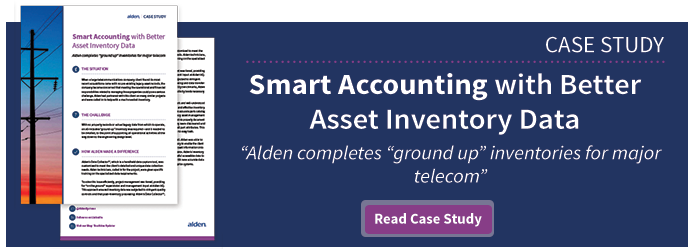The Inventory Cycle: When and How Often?
 There is little doubt that good inventory management practices are valuable to nearly any business, especially an inventory process that relies on physical equipment to stay operational day to day. Much thought is given to calculating spares or min/max levels—the most efficient, effective number of any critical item kept in inventory, but what about the frequency of conducting the inventory itself?
There is little doubt that good inventory management practices are valuable to nearly any business, especially an inventory process that relies on physical equipment to stay operational day to day. Much thought is given to calculating spares or min/max levels—the most efficient, effective number of any critical item kept in inventory, but what about the frequency of conducting the inventory itself?
It is an important issue. How often should one take the time and/or shift the resources to do a thorough inventory? We cannot tell you the exact equation for your specific industry and business, but we can offer a few pieces of advice that may help you decide for yourself. It all comes down to turning a critical eye on the individual items in your warehouse.
To figure out the best cycle, we encourage businesses to ask:
What is the asset worth?
In the telecommunications and utility worlds, the function of an item in terms of its system integrity or overall criticality to day-to-day operations will affect the determination of the proper inventory cycle. This is likely true for most other industries as well, as, for example, having enough of a critical piece of life-saving equipment on-hand is vital to a hospital system, as having enough paper, for example, would be vital to a printing company. The reason to play close attention to an asset’s worth is clear: items that are more critical to system integrity should be counted and reconciled within the inventory system more frequently to ensure that enough on hand. You also need to know those assets in inventory can be located easily.
How often is the asset used?
Some items in inventory may not be critical for operations, but may be used frequently. For this reason, keeping tabs on how many of a high-volume asset is available is just as imperative to operations. This is also a count that can, without successful inventory management, get quickly out of hand. So, inventory your high-volume assets, determine the rate of turnover, and then use that information to determine how often level checks should be performed.
How much does the asset cost?
Having high-priced equipment affects inventory frequency in a couple of ways. First, an asset inventory often results in a round of buying as broken assets are discovered and missing ones are replaced. Knowing how often your business can afford to purchase high-dollar items is important to determining the frequency of inventory. Secondly, high-priced items may often be critical in nature, and due to sheer monetary worth warrant a certain level of diligence during an inventory. One warning, however: an asset inventory based on item cost alone may lead to breakdowns in system integrity if a low-priced item has a critical function within the system. The bottom line: it is not considered a best practice to determine inventory frequency based on asset price alone.
Consider Multiple Inventory Cycles
To further enhance the process, businesses may also decide to score inventory items based on the three criteria above, then establish multiple inventory cycles within the same warehouse. The idea is to group assets into categories—A, B, C, etc.—then rotate the inventory of each group. This way, each type of item is inventoried based on need, not simply lumped into a single round that would not be appropriate for its cost, usage or worth; a tactic that could potentially lead to problems, like the inability to operate.
